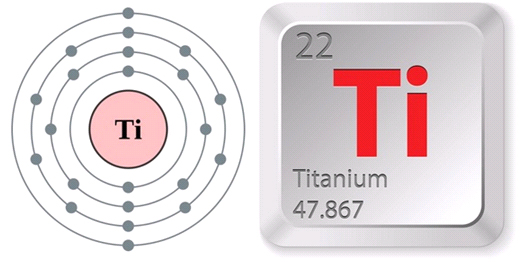
W. Gregor in England and M.H. Klaporth in Germany discovered titanium independently in the 1790s. Titanium gets it name from the Greek God “Titan”, the God of enormous strength. In the initial period, the metal was rare and this was largely because of the fact that isolation from its ores was difficult and there was little demand for the metal. Pure titanium was first produced by Matthew A. Hunter, an American metallurgist, in 1910. Titanium is the ninth most abundant element in the earth's crust and is primarily found in the minerals rutile (TiO2), ilmenite (FeTiO3) and sphene (CaTiSiO5). Titanium makes up about 0.57% of the earth's crust.
The combination of high strength-to-weight ratio, excellent mechanical properties, and corrosion resistance makes titanium the best material choice for many critical applications. Today, titanium alloys are used for demanding applications such as static and rotating gas turbine engine components. Some of the most critical and highly-stressed civilian and military airframe parts are made of these alloys.
Titanium metal is used as an alloying agent with metals including aluminum, iron, molybdenum and manganese. Since titanium does not react within the human body, it is used to create artificial hips, pins for setting bones and for other biological implants. Titanium is used in several everyday products such as drill bits, bicycles, golf clubs, watches and laptop computers. Titanium is not easily corroded by sea water and is used in propeller shafts, rigging and other parts of boats that are exposed to sea water. Titanium oxide (TiO2) is used as a pigment to create white paint and accounts for the largest use of the element. Pure titanium oxide is relatively clear and is used to create titania, an artificial gemstone. Titanium tetrachloride (TiCl4), another titanium compound, has been used to make smoke screens. Titanium is the only element that will burn in an atmosphere of pure nitrogen.
The mechanical properties of titanium are more dependent on the phases present than they are on the actual composition of the alloy. Substitutional elements partially replace the titanium atoms in the lattice and in this manner alter the properties. Most alloy additives stabilize the body centered beta phase and lower the temperature of transformation to such an extent that at room temperature the alloys are a mixture of both the alpha and beta. The hexagonal alpha is relatively soft, tough, and ductile; whereas the beta is harder, stronger, but less ductile. From this it can be seen that by changing the proportions of these phases, the mechanical properties can be varied. Many methods have been employed to produce the desired phase proportions, and from these have emerged five basic methods of heat-treatment: quenching, tempering, continuous cooling, isothermal transformation, and solutionizing and aging.